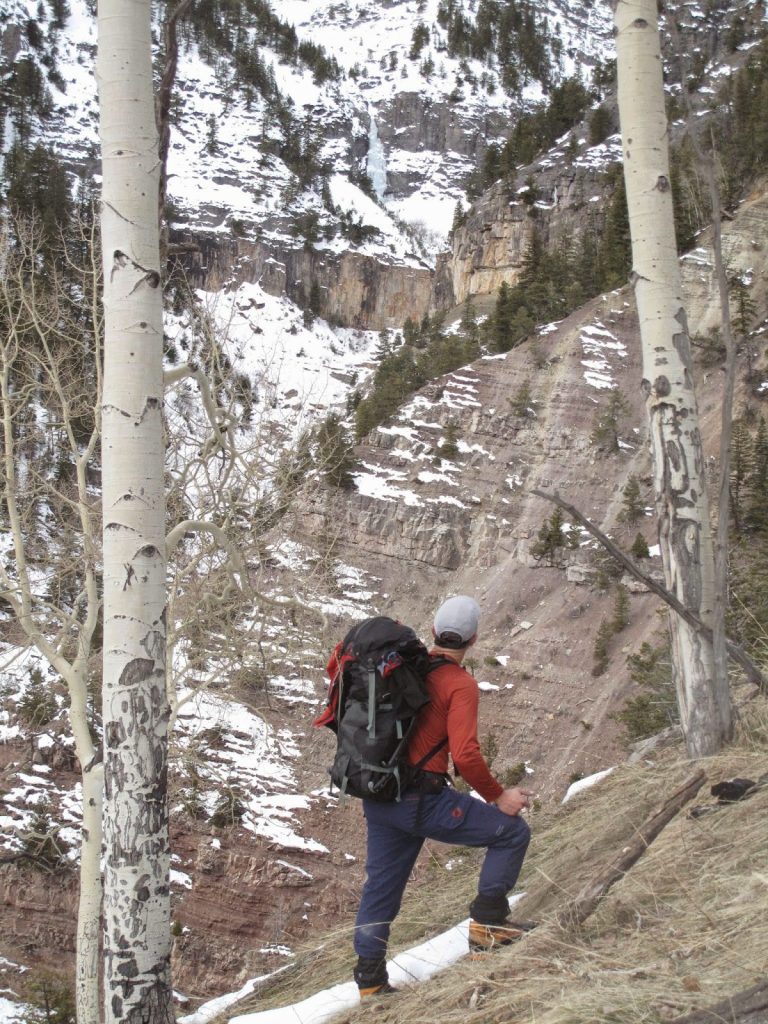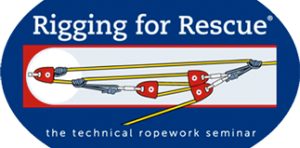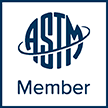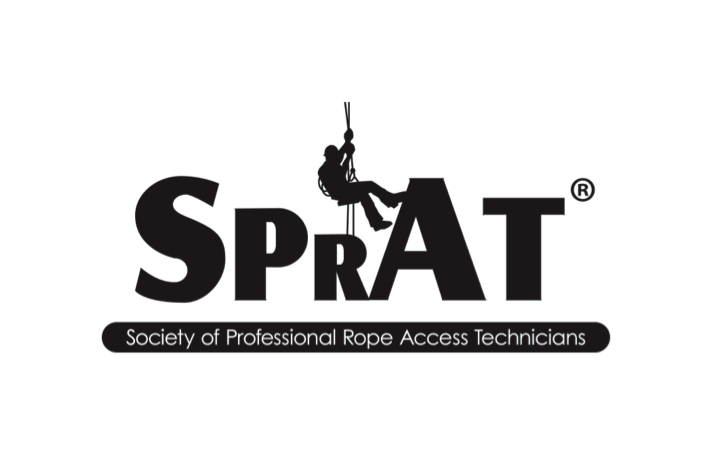Avalanche rescue course

This past week in Silverton, several members of the Rigging for Rescue instructor cadre got the unique opportunity to participate in an avalanche rescue course instructed by Swiss avalanche rescue guru Manuel Genswein. It was a “pro” level course designed for ski patrollers, forecasters, and mountain rescue personnel intent on increasing their depth and breadth of knowledge in avalanche rescue. Manuel comes from a background of electrical engineering and has had a role in designing some of the more innovative avalanche beacons in the industry. When he is instructing on the topic of beacons, it seems as if he has 457 kHz flux lines radiating out of his brain. His command of the material is impressive. The course focused exclusively on avalanche rescue procedures. This is unique within the realm of avalanche awareness education. Typically, an avy awareness course will cover a wide range of skill sets ranging from beacon use, to snow stability evaluation techniques, as well as decision-making as it relates to skiing or traveling in avalanche prone terrain. All important considerations. However, this course limited the scope of focus to just the rescue side of the problem-solving – i.e. how to shovel more efficiently, multiple burial detection, and a whole host of other topics. It was a superb course and we all felt privileged to be able to attend. Following the pro course, Manuel put on a recreational course both in Durango as well as Ouray. The rec course in Ouray was co-sponsored by Ouray Mountain Rescue and the same crew of RfR instructors all pitched in to act as volunteer proctors for the day. We had 32 participants attending a free clinic on avalanche rescue. It was a great turnout and participants were glowing about the information they received from one of the top educators in the subject of avalanche rescue. Following the clinic, we took Manuel up on a short ski tour in the San Juan’s. He had a 6am flight to Canada the next morning. Manuel instructs in 27 countries around the world and his techniques have been adopted by the International Commission for Alpine Rescue (IKAR). His educational style and curriculum has a lot of parallels to RfR: critical thinking, systems analysis, and empiricism. Thank you Manuel for an inspiring week of avalanche rescue education! Ski tour on Red Mtn Pass Manuel with RfR instructors Kevin and Leo
Waterfall Ice Workshop

We just wrapped up our first RfR Waterfall Ice Workshop for 2016. We had a diverse group of participants from the US and Canada. The Canadians from Newfoundland continued to remark how “amazing” it was that we had yet another day of Bluebird sunny weather. And we continued to inform them that this was perfectly normal in Colorado… The workshop started with a base foundation of movement skills on ice and then transitioned into a critical evaluation of climbing belay techniques as well as companion rescue skills and multi-pitch strategies on an ice climb. By the middle of the week we moved into team-based rescue skills on ice including the San Juan pickoff as well as some litter work. The wrap-up exercise was a multi-pitch ascent to a mock patient location followed by a 5-pitch lower back down to flat ground. An excellent training exercise to cap off a superb week of rescue work in the waterfall ice environment. Counter-balance rappel pickoff Multi-pitch lowers down an ice climb Leading steep ice Transitioning to low angle terrain Team approach to base of ice Station transition using v-thread anchors for Main & Belay
ITRS wrap-up and some food for thought
It has been a little more than a month since we returned from attending the International Technical Rescue Symposium in Portland, Oregon. This year featured a variety of excellent presentations on topics ranging from Two Tensioned Rope Systems, to sharp edge testing, Prusiks, how dirt may affect your rope, and the MPD – just to name a few. John Morton’s presentation on theoretical breaking strengths of trees was a particularly excellent presentation. John’s work was inspired by conversations and collaboration with Mark Miller of Rigging for Rescue. Mark tragically passed away in January, 2015 in an ice climbing accident. He and John had exchanged ideas on how to go about theorizing breaking strengths for trees. John offered a user-friendly model that theorized what many end-users have suspected for quite some time – live trees are very robust anchors and often we can safely utilize trees much smaller than the tried and true “helmet diameter” tree size. This was my 14th consecutive ITRS. One of the things that I have continued to observe over the years is that a lot of the presentation material tends to focus on some combination of materials, devices, and system integrity (or lack thereof). The evidence provided is often either a series of slow pull examinations or drop tests. At Rigging for Rescue, we have regularly presented at ITRS on topics that would meet that very same description. Recently, however, we have begun to take a much stronger interest in evaluating the human factor and how that interfaces with the systems and devices that we employ in rope rescue. Typically, when we talk about identifying weak links in a system the focus is often from an engineering perspective (e.g. a component part at X kN of breaking strength). But a review of incident and accident reports from a variety of industries (aviation, automotive, forestry, etc.) rarely reveals the catalyst being a material or device. Oftentimes, contributing factors are directly linked to the human being(s) operating the system – loss of situational awareness, poor training, poor supervision, poor communication, etc. In rope rescue, we have a wide variety of available materials, devices, and systems. The good news is that the vast majority of these are well constructed and well vetted through a combination of manufacturing specs, standards, testing, and anecdotal use. The gear is good! I think that the future breakthroughs for increasing the safety of rope rescue operations will not be a fancier widget. The meaningful breakthroughs will be increasing the levels of understanding of the human factors associated with these various systems/devices. It is my hope that we continue to see more of these types of test series and presentation topics at future ITRS gatherings. In that vein, here are a couple of really good links to talks that would be well worth your time to check out: Mike Lauria’s podcast focuses on operational leadership and decision making: https://www.youtube.com/watch?v=IALiRvhF7Qc Stuart Firestein’s TED Talk addresses how science is pursued versus perceived: https://www.ted.com/talks/stuart_firestein_the_pursuit_of_ignorance?language=en Our own Rigging for Rescue training seminars continue to address the finer points and nuances of systems, devices, and the like. But as critical thinking rope rescue practitioners, we are continuing to be proactive about weaving in themes of decision-making, leadership, risk management, and overall awareness of the human factors that may be affecting our system integrity.
Bad Ass Pencil

The early season ice climbing sendfest continues unabated with another day in Eureka. On Wednesday, the objective was Stairway to Heaven. The climb was super fat and the ice very sticky. Yesterday, Jim and I made a return visit to Eureka with the intent of climbing Hoser’s Highway. We had both previously climbed the route in past seasons, but it does not form up consistently every year and reports were that it was in good shape. However, while racking up in the parking lot at Eureka we noticed that Bad Ass Pencil appeared to be in climbable condition. Additionally, there was another sun-rotted pillar further up slope that also appeared to be in decent shape. Both of these were absent on our local climbing tick list, so we quickly abandoned our original objective and instead slogged up the slope towards the pillars. We did the sun-rotted one first. It won’t be around for long if the temps don’t cool down soon. The east facing aspect gets hits hard by the sun for a few hours in the AM. The second climb was the aptly named Bad Ass Pencil. It appeared to be in dubious condition at first glance, but it actually climbed and protected very well. Steep and pumpy! Stemming the dead vertical pillar Bad Ass Pencil
Pike ‘n Pivot technique
This is a re-publication of a previous post on Pike ‘n Pivot technique. There was a video issue on the old post. Pike ‘n Pivot is a technique developed by Rigging for Rescue in the mid 1990’s as a method for negotiating a 90 degree edge transition with no high directional. The technique greatly reduces the effort needed to execute a difficult edge transition using more traditional methods. The footage below shows a Pike ‘n Pivot edge transition during an open-enrollment seminar in Ouray.
Early season ice in the San Juan’s

The ice climbing conditions in the San Juan’s are excellent for this time of the year. We have had colder temps this late autumn and a steady cycle of storms to coat the backcountry in powder. Recently, Kevin and I sampled the local classic Dexter Falls. We may have even been the first party on it this season; the ice showed no evidence of previous traffic and was super sticky. Late last week, Rigging for Rescue conducted a 2-day workshop for the Ouray Ice Park ice farmers. We focused on work at height risk management considerations, a variety of descent/ascent systems for use with equipment, and a number of companion rescue scenarios for rescuing a fellow worker (or climber) while on rope. Check out the conditions in the Ouray Ice Park – a very good start to the ice making this year. Climber pickoff Practicing personal on-rope systems in the Ouray Ice Park Swinging leads on Dexter Falls On lead on Dexter Sticky ice on the final pitch – Dexter Falls
The whirlwind that was autumn, 2015

As I write this entry I find it very hard to believe that we are into December already. Time marches by at the same rate for all, but it definitely feels like it moves along faster when you are busy. This past autumn had Rigging for Rescue instructors all across the US and Canada conducting training seminars. A couple of the highlights included return visits to both Yosemite Valley to work with the YOSAR rangers as well as Mount Desert Island, Maine to train with a cross-section of Maine SAR personnel from approximately eight different agencies. The YOSAR seminar exercises included the ‘small teams’ San Juan Pickoff, a multi-pitch exercise on Turtleback Dome, a Guiding Line suspension system, and a Kootenay Highline System including the Norwegian Reeve hoisting variation. San Juan Pickoff In Maine, the majority of the training areas included some of the spectacular sea cliffs of Acadia National Park. The photos below are from a day that we spent comparing and contrasting vertical versus horizontal litter orientation. Of course, both methods have their place in the technical rescue toolbox. There are numerous considerations for choosing one technique versus another. We explored these considerations and had a great day of training in a very scenic locale. Guiding Line Half Dome at dusk Kootenay Highline System Acadia National Park Upper Attendant position At Great Head cliff Multi-pitch transition
Huntington

On May 18, a long-standing project of Mike Gibbs and Erik Weihenmeyer came to fruition with a successful ascent of Mt Huntington in the Alaska Range via the West Face Couloir route. Erik and Mike were joined by Rigging for Rescue instructor Dave Shuman. Erik is one of the world’s most accomplished blind athletes having successfully ascended Mt Everest, the Seven Summits, kayaked the Grand Canyon, and has competed in numerous expedition length adventure races. Erik and Mike’s previous climbing adventures include ascents of the ice climb Polar Circus in Canada as well as Bridalveil Falls near Telluride. This was their first mountaineering trip together. Huntington involves over 1000 meters of technical climbing up to 90 degree ice and includes the full array of alpine climbing challenges ranging from icefall navigation to ridge climbing and steep ice. An ascent of Huntington by any route is a hallmark achievement in a mountaineering career. We are proud to have been able to play a part in Erik’s successful ascent. Upon return to our basecamp, Erik stated that it was, “the hardest mountain I have ever climbed.” Berg Heil Erik! Erik pointing out route at Talkeetna Ranger Station Mt Huntington – West Face Dave leading steep ice on Day 1 The ‘spacious’ alcove bivy Traversing out of alcove – morning Day 2 Still smiling on Day 2 Erik and Dave on final pitch – Tokositna Glacier below Erik and Mike on summit – Denali in background
New Research – Aramid Fiber Friction Hitches
At long last we have managed to get our recent research on aramid fiber friction hitches up on our own website. This research was conducted over the course of multiple testing sessions spread out over approximately 18 months. The testing was limited to two aramid fiber friction hitch make/models: the Bluewater VT Prusik and the Sterling RIT 900 cord (aka Hollow Block). The test series included both slow pull examinations as well as drop testing. The research was initially presented at ITRS in Golden, CO in November, 2014. The website posting can be found on dev.riggingforrescue.com. Click on our “Research” link, then select “Recent Projects”, followed by “Aramid fiber friction hitches.” The sample of PPT slides include the raw data summaries as well as some video clips. What you won’t find included are any of our conclusions and/or recommendations. Those thoughts lend themselves to the full presentation narrative in a face-to-face setting. We hope you find the research useful and informative.
Ice is nice

The winter is in full swing in the San Juan’s and the back country ice climbing conditions are about as good as they ever get for this early in the season. Many of the classics like Ames Ice Hose, The Ribbon, Stairway, and Skylight have seen numerous ascents in the past couple of weeks. The mini drought of the past 3 weeks has created benign avalanche conditions and great access to some of the more remote and exposed back country routes in the range. The snow storm coming in presently will change that access, but we sure have enjoyed it while it lasted!




